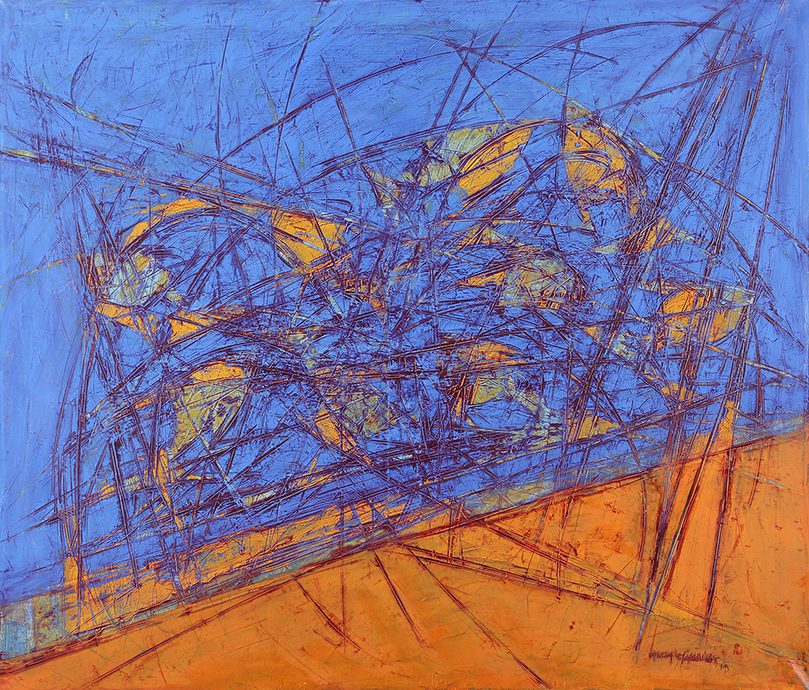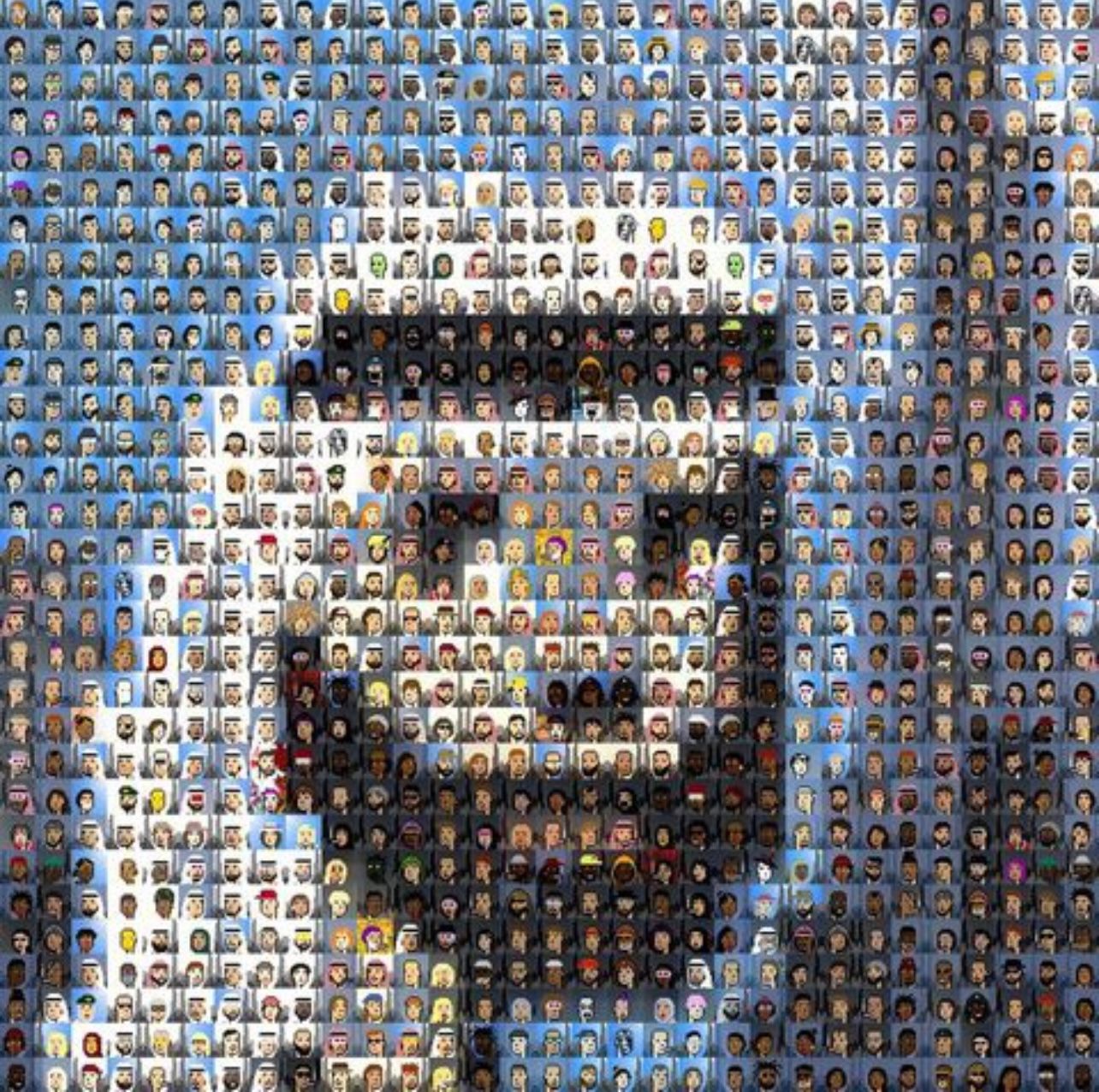Taking an interest in Ittah Yoda’s work first means failing to understand it. The absence of clear narration, replaced by an insistence on methodology, as well as the self-engendering of all their projects can confuse the viewer who tries to approach their work with the same mechanisms that prevail in the art world today. While Ittah Yoda may use some of the recognisable codes of contemporary art, what they create is something else entirely. It doesn’t say anything. Their work isn’t really a content, a discourse. It says nothing, but reflects instead on the conditions of appearance of enunciation. Their practice revolves around a few fundamental syntactic principles: namely, co-creation, scientific anchoring, self-generation and rhizomic relationships between all their works, the use of natural materials that are increasingly linked to their exhibition sites, and references to an ancient rather than current collective history; which they use to reframe the fundamental question of being-in-common. And more precisely, ask what are the conditions of appearance of a new political reflection (in the actual sense of le politique)?

To It all began with a big bang. The duo imagined one original sculptural form, which they have been endlessly rearranging and constantly feeding with external information so as to give birth to all subsequent works, like many generations in an evolutionary system. A second notable event was the discovery of the symbiotic relationship that unites phytoplankton and zooplankton, which they studied with the biologists of the Institute of the Sea in Villefranche-sur-Mer. The discovery of this relationship provided a structure to the duo’s practice: this big bang would become that of an ecosystem with a symbiotic identity. The Symbiocene would become the philosophical stance of each project and collaboration, the prefiguration of a post-Anthropocene world governed by mutually beneficial, harmonious, and sustainable relationships between all beings, both living and digital.
Under the aegis of the Symbiocene as a concept, the artists have thus developed a methodology that is as much at work in their creative process as in the works themselves. This structure of thought is further intended to be inhabited by those who populate it. It aims to bring about an ecosystem in perpetual mutation, an ideal polis made of a multitude of medium-species in permanent contact with one another.

It implements human/living/digital relationships based on symbiosis and can further be applied to many other topics pertaining to the being-in-common; namely, coexisting with all other living organisms, transhumanism, cohabitation with individuals from different gender identities, geographical origins, or socio-economic backgrounds. Such an act of inhabiting through meaning fully achieves their work with a final, fundamental layer of co-creation. Let’s follow the thread of their methodology.

If the duo’s practice is an ecosystem, then the digital interface (virtual reality, artificial intelligence, 3D manipulation) is the gestation process shared by all the beings of this world and gives birth to all forms further embodied in paintings, sculptures, or installations. For À l’Orée des Songes (At the Edge of Dreams), they premiere a new VR world that follows two already existing ones and evokes both the deep sea and a galactic landscape. It has the particularity of having been developed in collaboration with an artificial intelligence, which the duo has been cultivating.
The new paintings and sculptures on display result from the process of symbiosis thought of as a method for imagination. Drawn from virtual reality, the images in the paintings are like photographs of this symbiotic landscape in gestation. They incorporate hybrid forms derived from 3D reconstructions of multi-dimensional images of zooplankton, which are then lithographed – in close collaboration with Michael Woolworth – on canvases prepared with pigments. The latter derive from rocks quarried by the artists themselves in the United States, as well as Provence and Vassivière in France. One last layer is applied to the paintings, using oil sticks and spray paint.
The sculptures Echo and Alan have both a brass structure supporting a wooden element, one of which holds vials filled with phytoplankton liquid.

The wooden sculpture Alan comes from an oak trunk that the duo collected on the island of Vassivière, and which was further carved by a CNC machine. Its form is a hybrid, the result of a co-creation between the artificial intelligence that Ittah Yoda is developing and the artists themselves. Throughout the show, works echo one another: some of the paintings recall the sculptural shapes, while the brass structure Alan is a manipulation of a pre-existing form.
These different stages – which involve several human and non-human agents, as well as several types of materials – establish a sedimentation within the works, and re-enact natural processes normally played out on a geological scale. Such superimpositions, not only of materials but also of authorship, continue to outline the methodological structure we are interested in. First, they remind us that all beings are the result of multiple influences and different environmental factors. They further postulate that objects – in speculative realism terms, every element that constitutes our world, from a strand of hair to a pixel or a stone, and therefore a work of art – retain the memory of what has structurally constructed them, which makes them significant outside of our interpretation. Finally, they demonstrate that the symbiotic relationship human/living/digital is not only a relational utopia, but also has the capacity to be embodied within autonomous objects, and thus to pave the way for actual worldbuilding.

The methodology that emerges throughout Ittah Yoda’s show is a philosophy of mutation and decentring. It seeks to give autonomy, or presence, both to the source materials of the works (phytoplankton, virtual reality, minerals) and to the works themselves, by recognising their radical otherness. It further directs our attention to the immaterial relationships that weave our world and establish a continuity between all things, even if this logic sometimes escapes human rationalisation. Finally, it proposes that we reconsider our relationship to the world by getting out of the cannibalistic logic induced by centuries of political and economic history, and radically ask ourselves how our existence can be put at the service of the other, whether living or not, yet remain beneficial to us as individuals.
About Ittah Yoda
Ittah Yoda is formed by Kai Yoda and Virgile Ittah based between Berlin, Paris, and Tokyo. They both attended the Royal College of Arts in London. Kai Yoda initially studied environmental information at the prestigious KEIO University in Tokyo, before pursuing photography and moving image studies at the Royal College of Arts in London in 2011 where he met Virgil Ittah who specialized in sculpture. The duo formed following their graduation from the Royal College of Arts in 2013.

Ittah Yoda joined the Galerie Poggi in January 2022, and will open his first solo exhibition at the gallery in the spring of 2023, in parallel with several group and solo exhibitions at the Centre Culturel Jean Cocteau aux Lilas (FR), at the Musée des Beaux Arts d’Angers (FR) and at the Centre International d’Art et du Paysage (FR) – Île de Vassivière.
Ittah Yoda has already had numerous solo and group exhibitions, including Paris + by Art Basel, Paris (FR), the Armory Show, New York (US), the Palais Augmenté, Grand Palais Éphémère, Paris (FR), the Biennale de Nice, Le 109, Nice (FR), the Rencontres d’Arles, Arles (FR), Poush Manifesto, Paris (FR), Sprout Curation, Tokyo (JP).
They are part of the most promising artists of 2022 according to the newspaper Le Monde.
Cabinet
Josèfa Ntjam’s work concurrently displayed in the cabinets is also concerned with the political potential of microscopic processes and their capacity stimulate new political imaginaries.
Her series Lilly Pollen draws a parallel between the survival and multiplication techniques of micro-organisms, and the tactics of resistance implemented by minority groups. Like the Symbiocene for Ittah Yoda and their interest in the phytoplankton/zooplankton relationship, the molecular processes of division, coagulation and proliferation become in Ntjam’s practice the model for a political stance based on mutation and genetic memory.
The prefigurative ambition of her work is further embodied in the series Dattermitières, which uses hybridization as a technique to imagine new possibilities, not unlike Ittah Yoda. Mixing the structures of dates and termite mounds, the sculptures of this ensemble become architectural proposals based on plant and animal – not human – relationships to the world, welcoming mutation, and exchange as a fundamental principle.

Josèfa Ntjam is an artist, performer and writer whose practice combines sculpture, photomontage, film and sound. Gleaning the raw material of her work from the internet and books on natural sciences, Ntjam uses assemblage – of images, words, sounds, and stories – as a method to deconstruct the grand narratives underlying hegemonic discourses on origin, identity and race.
Her work weaves multiple narratives drawn from investigations into historical events, scientific functions, or philosophical concepts, to which she confronts references to African mythology, ancestral rituals, religious symbolism and science-fiction. These apparently heterogeneous discourses and iconographies are marshaled together in an effort to reappropriate History while speculating on not-yet-determined space-times – interstitial worlds where systems of perception and naming of fixed (id)entities no longer operate.
From there, Ntjam composes utopian cartographies and ontological fictions in which technological fantasy, intergalactic voyages and hypothetical underwater civilizations become the matrix for a practice of emancipation that promotes the emergence of inclusive, processual and resilient communities.

For more information please visit https://galeriepoggi.com/en/


